#Duke Riley
Photo
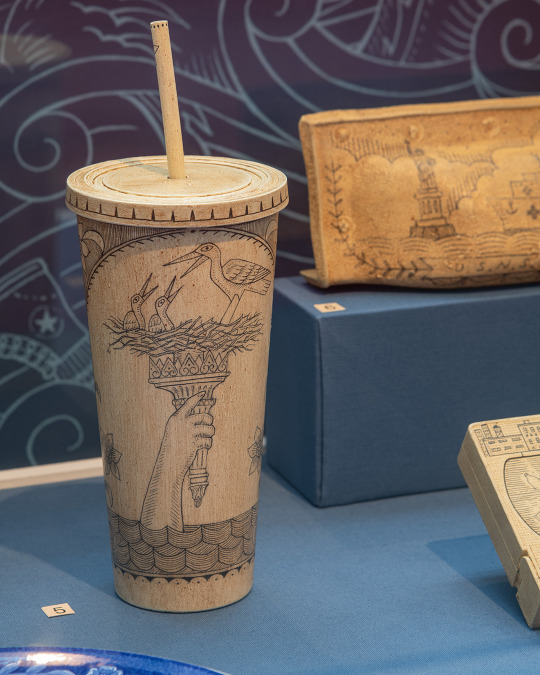
Duke Riley’s Poly S. Tyrene Memorial Maritime Museum series, reenvisions the traditional maritime craft of scrimshaw through the use of bottles, containers, and other found plastic beach trash.
The work shown here—with an iconic symbol reimagined—is displayed in a case with 15 other objects depicting New York landmarks.
This series is part of 250 other new and recent works of Riley’s are on view through April 23, 2023.
📷 Installation view, DEATH TO THE LIVING, Long Live Trash. Brooklyn Museum, June 17, 2022 - April 23, 2023. (Photo: Danny Perez, Brooklyn Museum)
#Brooklyn Museum#brooklyn#museum#art#exhibition#scrimshaw#maritime art#Duke Riley#DukeRileyBkM#nyc#new york city
407 notes
·
View notes
Text
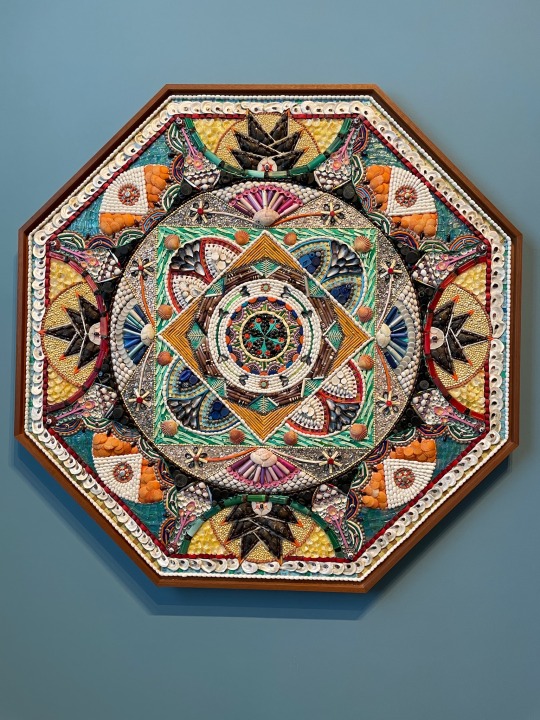





#MosaicMonday:
Duke Riley’s modern day “Sailor’s Valentines” of seashells & found plastic trash, from his “Death to the Living: Long Live Trash” show at Brooklyn Museum:
1 I'm Delicious, Come On Get Your Money's Worth, 2020
2 Order from Prescription History, 2020
3 If It Feels Good Do It, 2020
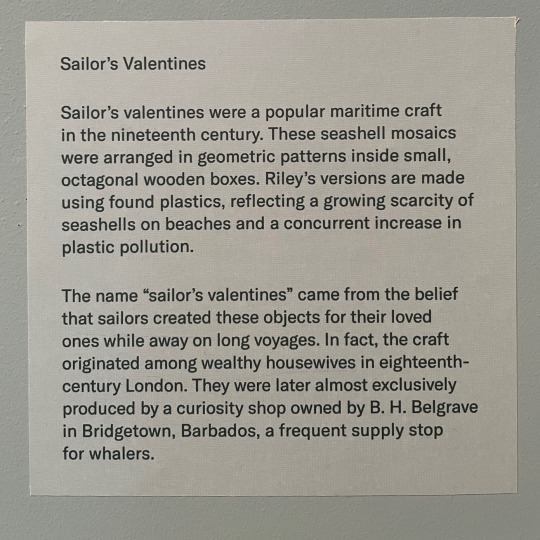
Sailor's Valentines
Sailor's valentines were a popular maritime craft in the nineteenth century. These seashell mosaics were arranged in geometric patterns inside small, octagonal wooden boxes. Riley's versions are made using found plastics, reflecting a growing scarcity of seashells on beaches and a concurrent increase in plastic pollution.
The name "sailor's valentines" came from the belief that sailors created these objects for their loved ones while away on long voyages. In fact, the craft originated among wealthy housewives in eighteenth-century London. They were later almost exclusively produced by a curiosity shop owned by B. H. Belgrave in Bridgetown, Barbados, a frequent supply stop for whalers.
#Duke Riley#American art#contemporary art#environmental art#shell#shells#seashell#seashells#mosaic#plastic#trash art#exhibition#museum visit#Brooklyn Museum#animals in art#sailor’s valentines#geometric art
62 notes
·
View notes
Text

Sarah Meyohas, “Interference #19”, 2023, Holograms, mirrored black glass, aluminum
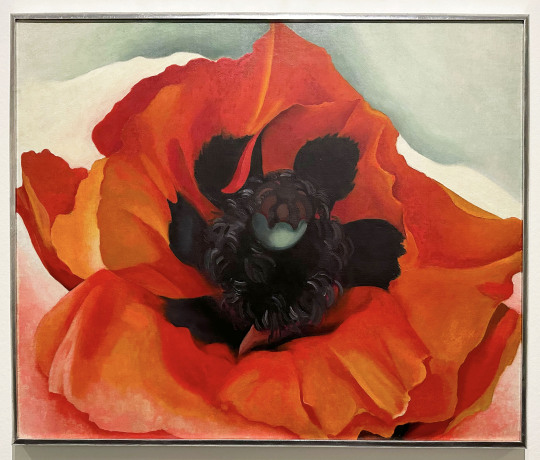
Georgia O’Keeffe, “Poppy”, 1927, Oil on canvas
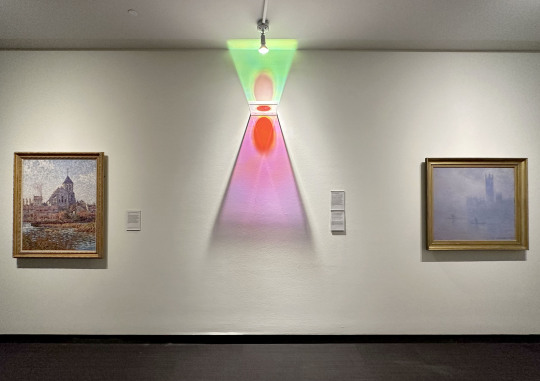

Francis Picabia “The Church of Montigny, Effect of Sunlight” 1908, Oil on canvas (left); Christian Sampson “Projection Painting”, 2023, Acrylic and films with LED light; and Claude Monet “The Houses of Parliament, Effect of Fog, London” 1904, Oil on canvas (right)
The Nature of Art exhibition at the Museum of Fine Arts St. Petersburg merges art from the museum’s collection with loaned works to explore- “art’s crucial role in our evolving quest to understand our relationship with nature and our place in the cosmos”.
One of the benefits of an encyclopedic museum is that visitors have the opportunity to experience art throughout history, and to revisit works that resonate with them. For the section titled Artist as Curator, Sarah Meyohas and Christian Sampson chose pieces from the museum’s collection to pair with their own work.
From the museum-
At first glance, perhaps, these may seem like unusual combinations, but upon deeper contemplation, their selections reveal complementary artistic intents. For instance, Meyohas and Georgia O’Keeffe share an interest in close looking, particularly in finding new ways to examine underappreciated aspects of the natural world. Sampson, influenced by the California Light and Space Movement, is interested in current scholarship that suggests the hazy fog found in Claude Monet’s work is an early depiction of air pollution, offering an entirely new perspective on the artist’s representations of light.
Sampson also created the four-part installation, Tempus volat, hora fugit, on view until 2025 at the museum.
Below are some of the works from additional sections of the exhibition.


Postcommodity, “kinaypikowiyâs”, 2021, Four 30.5-metre industrial debris booms
Postcommodity is an interdisciplinary art collective comprised of Cristóbal Martínez (Genizaro, Manito, Xicano), and Kade L. Twist (Cherokee).
About Postcommodity’s work, kinaypikowiyâs, (seen above) from the museum-
This work is composed of debris booms, used to catch and hold environmental contaminants such as garbage, oil, and chemicals. The colors of the booms correspond to different types of threats— red (flammable), yellow (radioactive), blue (dangerous), and white (poisonous)-in the labeling system for hazardous materials. To indigenous peoples, these are shared medicine colors that carry knowledge, purpose and meaning throughout the Western Hemisphere. Suspended like hung meat, the booms represent a snake that has been chopped into four parts. Each part represents an area of the colonial map of the Western Hemisphere: South America, Central America, North America, and all of the surrounding islands. The title, kinaypikowiyâs, is a Plains Cree word, meaning snake meat. Divided by borders, Postcommodity asserts that all people living in the Americas are riding on the back of this snake.


James Casebere, “Landscape with Houses (Dutchess County, NY), 2009, Archival pigment print mounted to Dibond
James Casebere creates architecturally based models for the large scale photographs seen above.
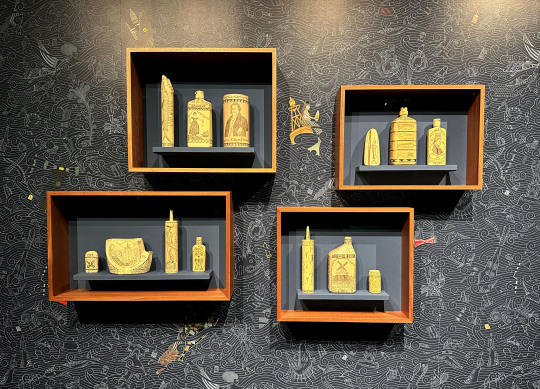
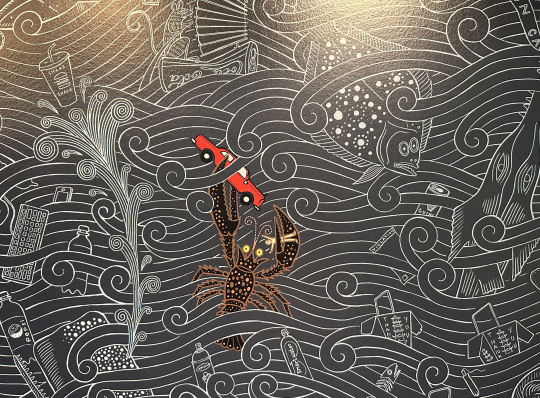

Duke Riley's Reclaimed ocean plastic sculptures and “Tidal Fool” wallpaper
Duke Riley’s work, which was previously shown at Brooklyn Museum, addresses issues of environmental pollution by using discarded plastics found in the ocean and other waterways to create new work inspired by the past. You can hear him discuss his work in this video.
From the museum-
Inspired by the maritime museum displays he saw while a child growing up in New England, Riley’s scrimshaw series is a cutting observation of capitalist economies-historic and today-that endanger sea life. The sculptures were created for the fictional Poly S. Tyrene Memorial Maritime Museum, and are contemporary versions of sailors’ scrimshaw, or delicately ink-etched whale teeth and bone. Riley first thought about using plastic as an ode to scrimshaw when he saw what he thought was a whale bone washed up on the beach in Rhode Island; it turned out to be the white handle of a deck brush. Riley regularly removes trash from beaches and waterways, and often uses this refuse in his work.
Riley collaborated with Brooklyn-based Flavor Paper to create these two custom wallpapers for his solo exhibition DEATH TO THE LIVING, Long Live Trash at the Brooklyn Museum. Tidal Fool exhibits Riley’s trademark humor in the face of devastating water pollution; notice the Colt 45-guzzling mermaid. Wall Bait vibrantly references Riley’s meticulous fishing lures, which he crafts from refuse found in the waters around New York City.


Daniel Lind-Ramos,"Centinelas de la luna nueva (Sentinels of the New Moon)", 2022-2023, Mixed media
From the museum about this work-
In Centinelas de la luna nueva, he evokes the elders of the mangroves, spiritual beings who watch over and ensure the health of this essential coastal tree. Mangroves are the basis for a complex ecosystem that shelters sea life and serves as the first line of defense in the tropical storms that batter the sub-tropics -including Florida.
Lind-Ramos's practice reflects the vibrant culture of his native Loíza, Puerto Rico, by honoring local agriculture, fishing, cooking, and masquerade. His sculptures also evoke Hurricane Maria (2017), the COVID-19 pandemic, and ongoing environmental degradation. Lind-Ramos is committed to the survival and sustenance of Afro-Taíno traditions and people of the Puerto Rican archipelago. However, his art engages the global community through shared emotions, parallel histories, and the commonality of human experience.
The next post will discuss two other artists in the exhibition, Brookhart Jonquil and Janaina Tschäpe.
#Art#Museum of Fine Arts St. Petersburg#The Nature of Art#St. Pete Art Shows#Art Shows#Sarah Meyohas#James Casebere#Christian Sampson#Kade L. Twist#Christóbal Martínez#Postcommodity#Claude Monet#Daniel Lind-Ramos#Duke Riley#Georgia O'Keeffe#Environmental Art#Flavor Paper#Florida Art Show#Florida Art Shows#Francis Picabia#Holograms#Brooklyn Museum#Light and Space#Mixed Media Art#Models#Painting#Photography#Plastic#Recycled Art#Janaina Tschäpe
6 notes
·
View notes
Text

#nfl birthdays#august birthdays#deion sanders#eli apple#aidan hutchinson#dri archer#doug williams#jamarcus russell#xavier mckinney#duke riley
8 notes
·
View notes
Note
I think to me your trademarks are very nice nautical art and things that just seem like 19th century man before the mast (tattoos, little nautical symbols, mermaids and associated art, a sense of yearning, etc)
Thank you, friend!
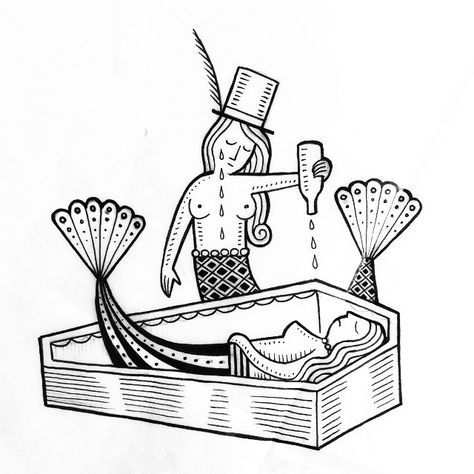
Here's a drawing by the nautical artist and tattooist Duke Riley that speaks to these vibes and my soul. Thanks again!
Tell me what my trademark is!
5 notes
·
View notes
Photo

Duke Riley | Peter Fisher | The New York Times
59 notes
·
View notes
Text
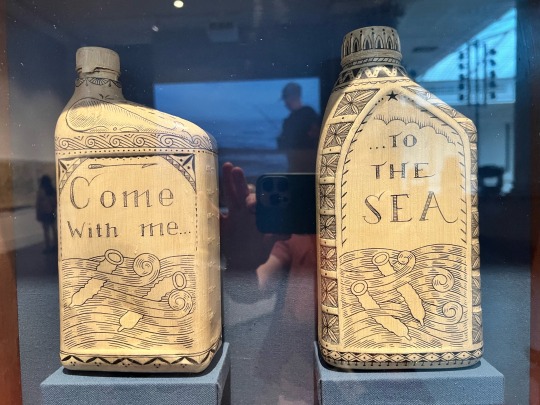



28 notes
·
View notes
Text


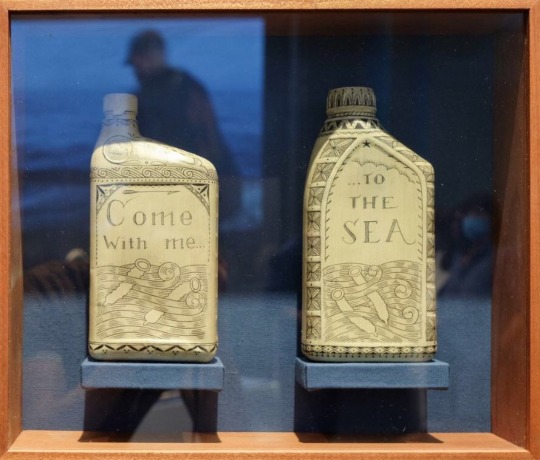
Duke Riley has long been interested in maritime history, folklore, and local customs – particularly around New York's waterways. Riley’s faceted glass artwork, “Be Good or Be Gone” (2011) at Beach 98 St (A,S) station in #Queens, features the iconic view of the houses on stilts seen from the A train as it crosses Broad Channel.
Riley’s current exhibition, “DEATH TO THE LIVING, Long Live Trash” until April 2023 at the @brooklynmuseum similarly focuses on #NewYork waterways to highlight marine fragility and resilience.
22 notes
·
View notes
Photo
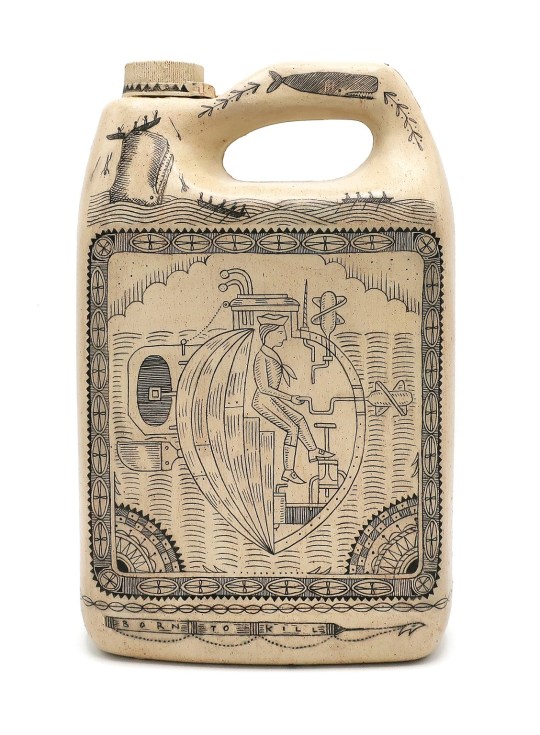
- Duke Riley, “Nos. 50-P, 74-P, 10, 70, 112, and 106 of The Poly S. Tyrene Memorial Maritime Museum” (2020), salvaged, painted plastic
15 notes
·
View notes
Photo




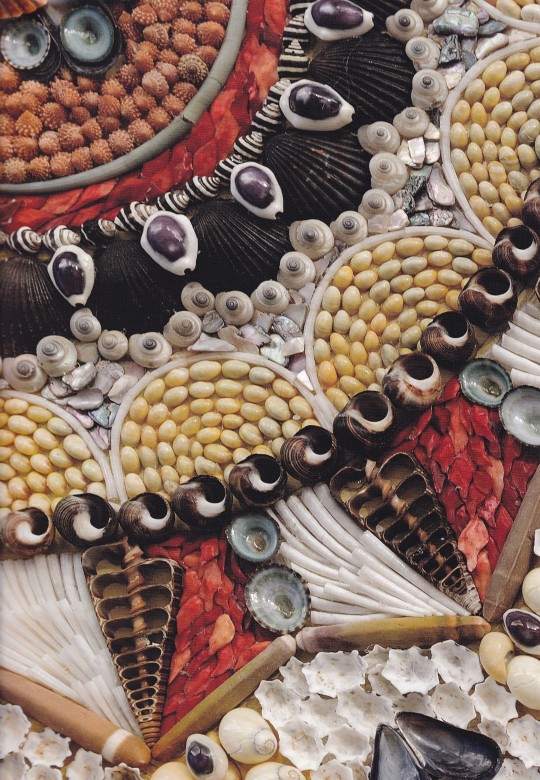





Duke Riley Tides and Transgressions
Duke Riley, Foreword Meredith Johnson, Afterword Anne Pasternak
Rizzoli Electa, New York 2022, 256 pages, 24.38 x 30.73 cm, ISBN 978-0847872411
euro 62,00
email if you want to buy [email protected]
Published on the occasion of the exhibition “Death to the living, Long live trash” held at the Brooklyn Museum, NY, June 17 2022- April 23 2023
The first survey of the twenty-plus-year career of the highly influential multimedia artist Duke Riley, famous for expressing transgressive political and ecological themes through metaphors drawn from nautical folklore and nature.
Duke Riley’s work explores his lifelong fascination with urban waterways, their historical relationship to the culture of life at sea, and the uneasy intersections of human geography with the physical world. His work comments on a range of issues, from the cultural impact of overdevelopment and environmental destruction of waterfront communities to contradictions within political ideologies and the role of the artist in society. This comprehensive monograph collects work from his expansive career, encompassing drawings, sculptures, mosaics, performances, and more than one maritime adventure, including his Fly by Night public art project of pigeons illuminated by LED lights flying across the New York City skyline, documentation of his nefarious shell company Non-Essential Consultants, and the mayhem of the 2009 anarchic mock Roman naval battle, Those About to Die Salute You at the Queens Museum.
Duke Riley is an artist based in Brooklyn, New York. Anne Pasternak is the Shelby White and Leon Levy Director of the Brooklyn Museum. Meredith Johnson is the vice president of arts and culture and head curator at the Trust for Governors Island.
orders to: [email protected]
twitter: @fashionbooksmi
flickr: fashionbooksmilano
instagram: fashionbooksmilano
tumblr: fashionbooksmilano
03/02/22
#Duke Riley#art exhibition catalogue#Brooklyn Museum NY 2022 2023#multimedia artist#nautical folklore#nature#urban waterways#life at sea#drawings#sculptures#mosaics#performances#fashionbooksmilano
3 notes
·
View notes
Photo
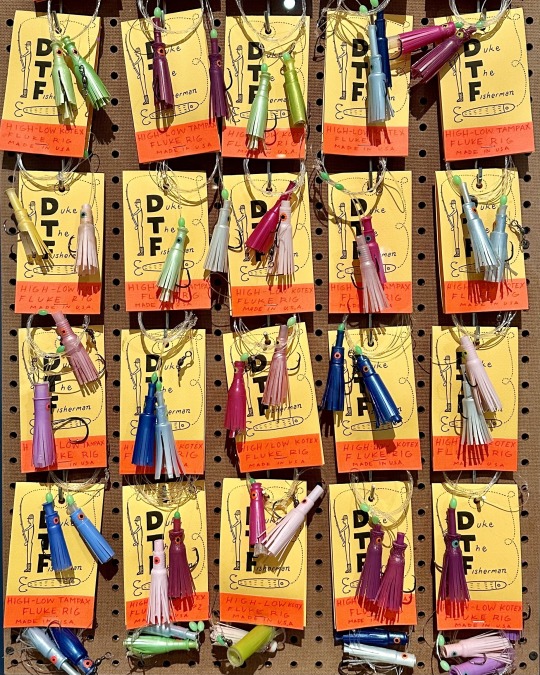
Raise your hand if you’ll never look at discarded tampon applicators the same way again. 🙋
In honor of the final week of DEATH TO THE LIVING, Long Live Trash, we’re here to remind you on behalf of Duke Riley to help keep our waterways clean.
This exhibition is overflowing with Riley’s cleverness including: parodies of YouTube tutorials from an alter ego “Duke the Fisherman,” a fully functioning chandelier (or “Boozalier”) made from empty mini liquor bottles, display cases filled with contemporary interpretations of scrimshaw depicting international business executives that the artist identifies as responsible for the perpetuation of single-use plastics, and so much more.
🔗 https://bit.ly/DukeRileyBkM
See the exhibition while you can through July 16.
#Brooklyn Museum#DukeRileyBkM#Duke Riley#brooklyn#museum#art#maritime art#scrimshaw#fishing lure#fishing#New York City#nyc#exhibition#environmentalism#climate crisis#ocean conservation
45 notes
·
View notes
Text

“Erika”, 2021, VCT, shotgun shells, and drink stirrers

“Duke the Fisherman’s High Quality Fluke Rigs Made in the USA™”, 2022, Found tampon applicators, fishing line, fishing hooks, nail polish, peg board, card stock

Detail of “Monument to Five Thousand Years of Temptation and Deception V, VI, VII”, 2022, Salvaged plastic, paint, fishhooks
The images above are from Duke Riley’s exhibition DEATH TO THE LIVING, Long Live Trash, on view at Brooklyn Museum in 2023. The artist’s inventive fishing lures, made from discarded plastic items found around waterways, are engaging to look at but highlight the grim reality of how much garbage is polluting our natural environment.
From the museum-
In DEATH TO THE LIVING, Long Live Trash, Brooklyn-based artist Duke Riley uses materials collected from beaches in the northeastern United States to tell a tale of both local pollution and global marine devastation. Riley’s contemporary interpretations of historical maritime crafts—such as scrimshaw, sailor’s valentines, and fishing lures—confront the catastrophic effect that the oil, food, and beverage industries have had on the environment through single-use plastics. The works are presented in the seventeenth- and eighteenth-century Jan Martense Schenck and Nicholas Schenck Houses, alongside a selection of historical scrimshaw from our collection, directly connecting environmental injustices past and present.
In his contemporary interpretations of scrimshaw—ink drawings etched into bone by sailors—Riley replaces the medium’s customary whale teeth with repurposed plastic containers, detergent bottles, toothbrushes, and other waste. The works incorporate the maritime imagery traditional to scrimshaw, but expand it to portray international business executives that the artist identifies as responsible for the perpetuation of single-use plastics. Also on view are Riley’s fishing lures and sailor’s valentines, similarly created with detritus found on northeast coastal beaches. The exhibition juxtaposes corporation-driven pollution with new short films by Riley that highlight New York community members working to remediate plastic damage and restore our waterways.
Erika, the mosaic pictured above, depicts the 1999 shipwreck of MV Erika which, after splitting in two during a heavy storm, released thousands of tons of oil into the Bay of Biscay off the coast of Brittany.
In the video below, Riley gives a brief tour of the Brooklyn show.
youtube
Some of the work from this exhibition is currently on view at Museum of Fine Arts St. Petersburg as part of their exhibition, The Nature of Art.
#Duke Riley#Brooklyn Museum#Environmental Art#Recycled Plastic#Fishing Lures#Mixed Media Art#Museum of Fine Arts St. Petersburg#MV Erika#Art Installation#Recycled Art#Sculpture#The Nature of Art#Trash#Wallpaper#fbf#Youtube
0 notes






